

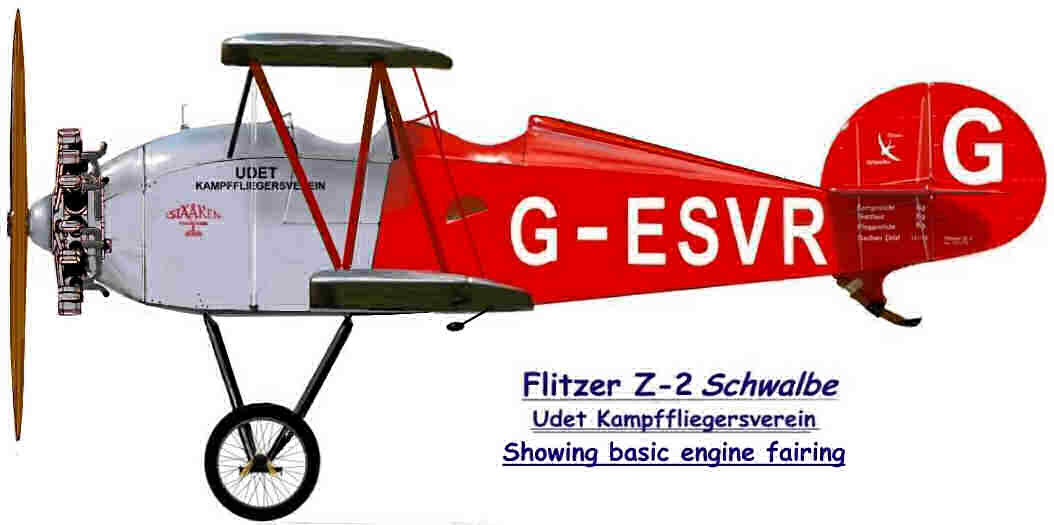
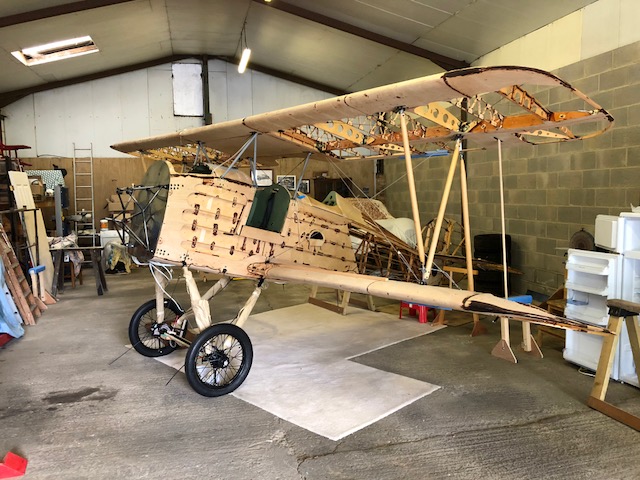
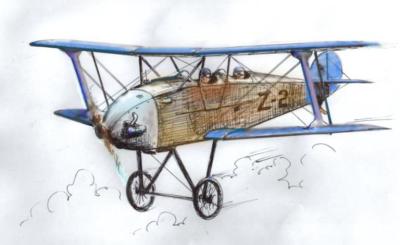
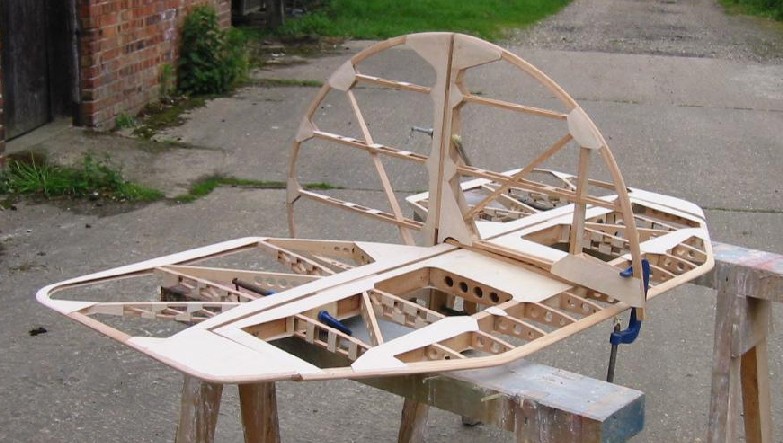
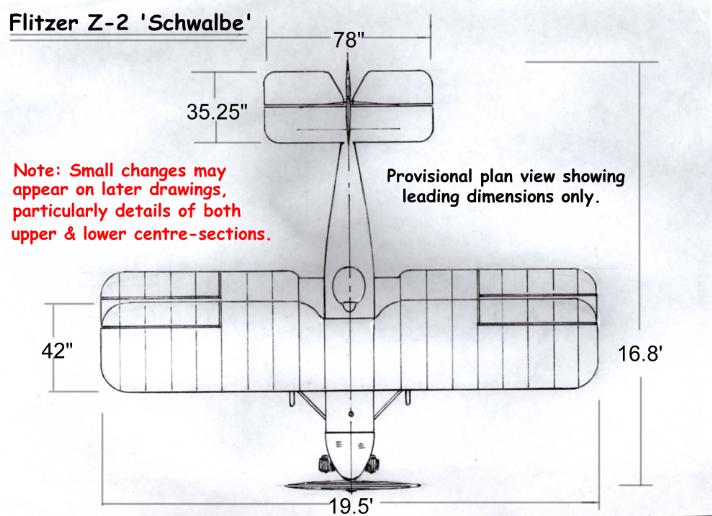
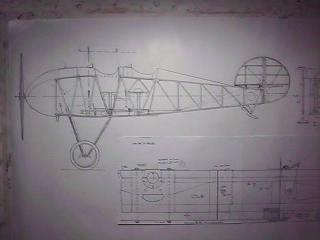
So far all Flitzers are direct drive, since my philosophy was simpler is better and if it isn't there it cannot fail. However, I appreciate that there are now some well designed PSRUs available, indeed Gary Steadman of Flitzer-Aero had begun designing an improved PSRU, but he is incredibly busy at present and I don't know how far he's gone with it.
Theoretically, the deeper nose and firewall bulkhead of the Z-2 Schwalbe should be able to accommodate the vertical offset of a reduction unit without unduly affecting the 'look' of the aeroplane, and small displacements of the final drive/thrustline should not upset things too much.
Purely from an aesthetic viewpoint the typical bull-nose round-down to the cowling assists in creating a visual 'short nosed' effect (which is somewhat illusory) but creates that vintage look, as the lines of the aeroplane flow aft best from that low thrustline. However, too much offset, while maintaining the original thrustline would mean that such an installation might lead to the motor being too low for a satisfactory cowling solution, as well as problems in designing the motor mount tube angles to accommodate the new lower engine position.
While it is probably desirable to fit a reduction unit to the Z-2, to provide additional thrust (and you'd have the propeller clearance with the long Flitzer undercarriages) it might be advantageous to seek a final drive solution that minimises vertical offset, and perhaps also adjust the resultant thrustline a little to achieve a reasonable compromise.
Gerard Killam (Flitzer-Builders) who's building a Stummelflitzer in Nova Scotia, was intending fitting a geared Subaru, and I believe this installation may have had a smaller offset. However I now understand that he's using a direct-drive 1800 Subaru, which will deliver up to 80 hp., on the recommended thrustline, maintaining the thrust/drag couple.
Another powerful new engine introduced as a competitor to the Jabiru is the Belgian-built Masquito motor (http://www.masquito.be/) which is a very well designed and lightweight motor in the 80 hp. category. The Aero-Vee with dual ignition is also now available, and of similar continuous output, and is provided as a kit-built unit.
I hope this helps.I wouldn't mind having a 2 seat biplane. I am looking forward to any new information as it becomes available about the Schwalbe. I have seen the side view and the plan view, and it doesn't seem to be quite as sexy as the Flitzer. I assume that this might be due the stretched out passenger area and the upper wing having to be high enough above the fuse to allow the passenger to get in. Since most of my flying time is by myself I would probably have a quickly removable front windshield and a front cockpit cover. I am trying to visualize what it would look like with the Rotec Radial Engine and the front cockpit covered.
Regarding the side elevation of the Z-2. You are quite right that compromises have been wrought to accommodate two, normal-sized adults (it won't fit everybody!) into what is possibly the smallest, straight-winged, conventional biplane in the world.
For that reason the height of the upper wing is greater than on the standard aeroplanes, but then this is mitgated by the much longer wing chord, deeper fuselage and longer undercarriage, so that the increases are minimised proportionally, and the longer rear fuselage and bigger elliptical tail better harmonises with the somewhat extended nose. Aspect ratio is still conventional, so it shouldn't suffer too much from tip vortice-induced drag, anthough this will inevitably be greater than on the Z-21.
No doubt a Rotec radial would serve to shorten the nose and would look superb, but the additional weight might mean an rearwards adjustment to the firewall bulkhead location, which would impact on fuel capacity (just when you'd need more) and on passenger leg room. Re-staggering the upper wing might be a solution, but then you are in to major redesign, of loads and moments calculations and a whole raft of knock-ons. Upper wing centre-section fuel containment or paired overwing slipper fuel tanks like on the 1930s Ramsey 'Flying Bathtub' or the Breguet 14 Postale is another solution that has emerged, and has been considered by the prototype Z-2 builder in France, for extended range.
I absolutely agree that a removeable front cockpit fairing and windscreen is essential for providing improved performance (and aerobatic performance) when flown solo, and is something I always draft into any projected two-seat design - usually pre-WW2 replicas, such as the Klemm 35, and the resulting machines often look 'sexier' as you put it, than contemporary single seaters to the same general specification.
Mike Wood (on this site) has designed very neat brakes and a steerable tailwheel assy. which would be applicable to the Flitzer range, and these are in the process of being extensively tested, as G-FLIZ is flown from its Scottish home base. He intends to make the drawings available in due course. He also worked (in a previous incarnation - before going on to fly the heavy metal) in the automotive industry, as a designer, so the brake design will reflect this professionalism.
Note that with any laser-cut fittings, it would be advisable to dress any edges where the fitting is required to be bent to fit, so that cracks will not propagate from the laser-hardened edges when cold-bending, at the same time as you drill and ream any undersize holes to your required bolt-sizes.
Best wishes and good luck with your present project.
Lynn Williams
It is now almost certain that the first UK Z-2 prototype will be equipped with the R2800, although it won't be a seaplane, as attached!
Best regards,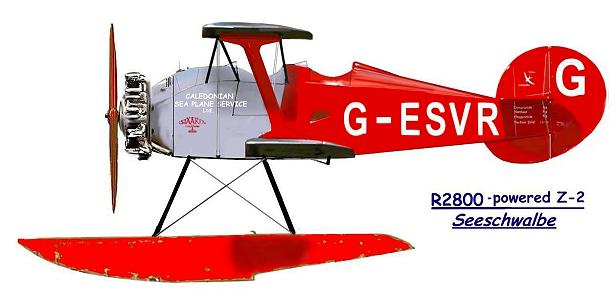
Hi Group,
Here is a preview of the latest Z-2 drawing, showing the forward fuselage construction details, plywood distribution, and torqueshaft installation.
The drawings for this aeroplane will not be generally available for the time being, pending a strength substantiation/analysis of the design, which departs from the other Flitzers only in that it carries about twice the payload, and is therefore very substantially reinforced in key areas, with generally bigger spar and primary structure cross-sections, double liftwires, increased wingspan and area, etc.
Lynn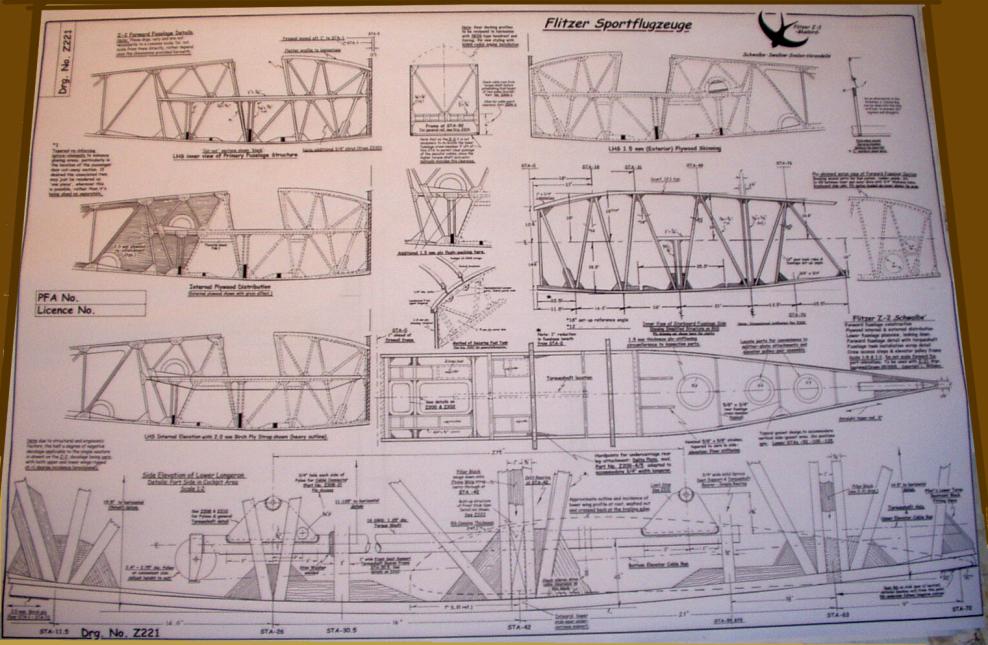
...The Z-2 is (appropriately) the two seater, known as the Schwalbe, Swallow, Bluebird, Hirondelle, or any other translation of that exquisite fork-tailed species, and was so named because of the fuselage's similarity to the curving, tapering shape of the swallow's streamlined head and body, a similarity that will diminish when the radial engine is substituted for the domed, bullet-cowling that typifies most other Z-Type noses.
So far five main sheets are available for the Z-2, that's four fuselage sheets and a tailplane drawing. Essentially, as with all other Flitzer developments, these are an add-on package to the basic Z-21 plan set of 33 sheets. However, I must be realised that this aircraft has yet to achieve prototype status, although the design in presently being analysed for strength substantiation - initially for Normal Category approval, with solo aerobatic and possibly limited dual aerobatic approval some way down the road.
It is hoped that the first of two UK prototypes will commence this year.
I attach a basic two-view GA, which is shown minus its interplane strut, for clarity.
Best regards,
Lynn Williams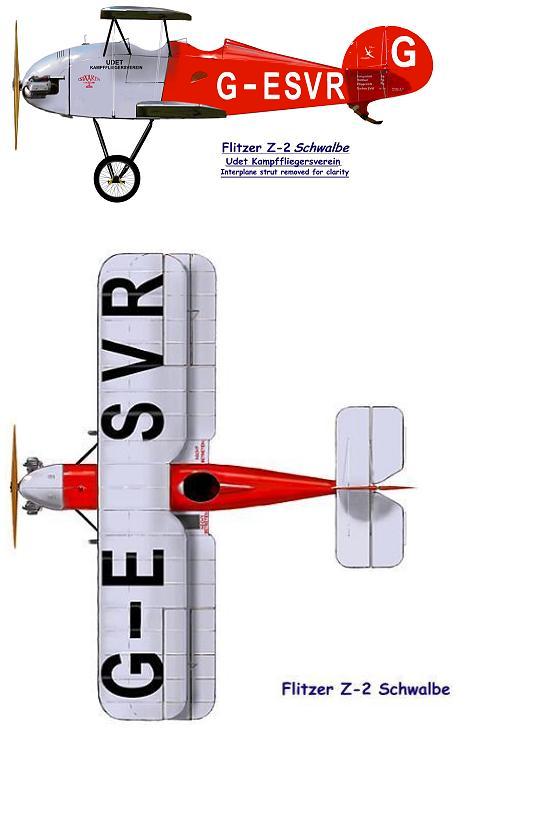
October 9, 2005
Lynn,
The Z-2 sure looks wierd without the I strut. That is quite the gap too. What will the span, overhang, gap between quarter chord points, chords, and zero lift line stagger at quarter chords be?
I am still slogging through some NACA reports and am unearthing some really cool info that I am mentally digesting. I will be writing my own NACA report here after not too long on normal force distribution upon each wing of a biplane cell using the similar Clark Y (as that data is available) at various alphas. This might help the CG range issue.
Anything from PFA on the interpretation? Maybe they don't want to answer?
Chris
Braumeister und Inspektor der Flitzer und Flitzermotoren
Hi Chris,
The small GA on the Swallow is probably not too accurate. The gap/chord/stagger is proportional, so I think there's some distortion on the side view. Anyway, it looks much better on the A1 sheet.
I'll have to measure the drawings for the data you're asking for, meanwhile I'll send a front elevation showing the gap relative to the overall span and cantilevered overhang - that's if it wasn't lost along with several years' worth of other computer data recently.
I have tried numerous times to ring the Engineering Dept. and have emailed them with all the CG corroborative data, and the request for an agreement on the VD for the Z-3 analysis, to no avail.
I'll try again tomorrow (Monday).
Back now to hangar construction, between rain showers.
Cheers,
Lynn
PS. That data has disappeared, so here's a rough preview of the Z=2 floatplane for a frontal aspect. Quite normal I think.
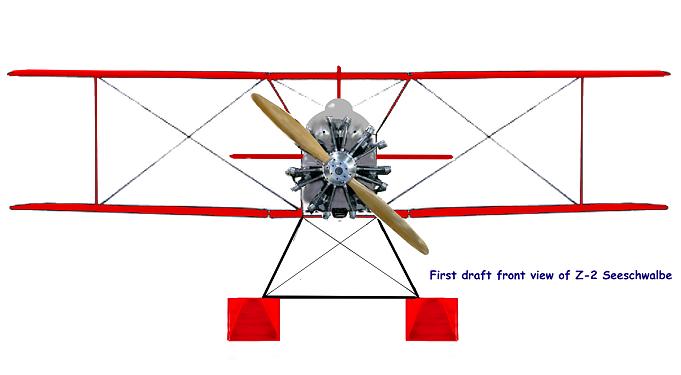
Fear not, the Z-2 Development Team has taken over the responsibility for the entire Schwalbe programme.
Simon Randle and Ian and Rupert Wasey, who are now offering brake assemblies and other metal parts for the Flitzers, will be combining to build the first two UK prototypes of the Z-2 to be equipped with R2800 radials, for which the Z-2 has been adapted. The stress analysis is already underway for this model and a mock up has been fabricated in the UK (as well as two others independently in both France and Italy). Video of the egress to the front cockpit is encouraging.
Under an agreement with them, I am not now selling any plans for the Z-2 until such time as all the drawings are finished, the analysis is complete, and PFA Engineering have accepted the design. This is simply to ensure that drawing amendments, where these are necessary, will not have to be provided in a global paper chase. Feedback from the stress engineers is so far very positive, with only small amendments in a few areas.
I will be supplying regular finished drawings to the Team when my other commitments allow, but certainly enough data so that the finite element analysis is not delayed.
Thanks for your support of the Flitzer marque. What started as a simple, brakeless single-seater with no trimming system has burgeoned into a seies of disparate evolutions to suit almost every individual taste in the genre.
Best wishes,
Lynn